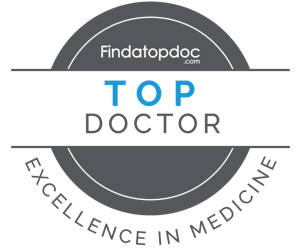Substance abuse and addiction are easy to run toward but difficult to escape.


It’ll Never Happen to Me
Anyone who abuses alcohol or drugs never thinks they could be the one to slip into substance use disorder. But addiction can catch up with anyone at any time. Addiction is never part of someone’s plan. No one ever seriously wishes to become an addict. But addiction can and does happen, and once you develop a disorder, it can be hard to get rid of.How many of us have been affected by the struggles of addiction, mental health issues, and substance use disorders? Perhaps we have family members, friends, or colleagues dealing with alcohol or drug abuse, or perhaps we struggle with substance abuse ourselves. It’s becoming more and more socially acceptable to talk about these challenges, seek help, and pursue change.
The Power of Destigmatization
It is imperative for us as a society to continue vocalizing the importance of substance use education and raising awareness of mental health issues. Yes, we have come a long way from those judgmental whispers behind closed doors, but we still have much further to go. The more we ask questions and learn about these public health concerns, the better.
Learning about these issues actively helps our society build a better environment of acceptance, learning, and care for those who are struggling. As we continue to destabilize the stigma surrounding addiction, we are taking deliberate steps to create a stable path towards healing and recovery for everyone. Addiction affects us all. Recovery should be a goal our entire society works towards to better our communities.
Frequently Asked Questions
According to The National Institute on Drug Abuse, addiction is defined as “a chronic, relapsing disorder characterized by compulsive drug seeking, continued use despite harmful consequences, and long-lasting changes in the brain. It is considered both a complex brain disorder and a mental illness.” Yet, even with this clear-cut image of what addiction is, it is important to remember that everyone’s personal experiences with addiction vary wildly, whether they suffer directly from abuse or not.
Still, despite this clear, clinical definition and ever-expanding educational materials, it is very common to hear people make light of this severe condition. We often hear, or ourselves make jokes about being “addicted to caffeine” or “addicted to TV” without realizing the severity of true addiction. While it is possible for individuals to be dependent on substances like caffeine, rarely does such a dependence meet the full criteria of substance abuse disorder.
Many people do not fully understand what addiction is and what it can do to a person. As a result, we are often asked, “Is drug addiction a disease?”
Yes.
In years past, addiction was often viewed as a voluntary choice, an “at-will” state of delinquency. But we’ve learned over time that this simply is not true. Addiction isn’t something people can opt out of on a whim — The cravings are insatiable; the drug-seeking habits and impulse uses are not rejectable through pure willpower. Addiction takes time to develop, and it takes time to treat and defeat.
Addiction is not a whim. And it cannot just be stopped through pure force of will.
- Heroin
- Cocaine (Crack)
- Alcohol
- Nicotine
- Methamphetamine (Meth)
Thus, the more someone continues to use substances, the more the brain becomes adjusted to the experience of rapid-fire dopamine release. But dopamine is not an inexhaustible resource. Using up too much dopamine can fry the brain’s pleasure center, especially in artificial circumstances. Many drugs that people use work by manipulating the brain into producing massive amounts of dopamine.
At first, it seems nice, but the natural workings of your brain cannot keep up the pace for long and soon you are chasing substances in order to feel any kind of pleasure at all. As you continue to use drugs or alcohol to stimulate dopamine release, your mind grows increasingly accustomed to these new levels of pleasure. Dips in your dopamine levels can come to feel treacherous, and you can become addicted to substances that give this effect as you chase “happy chemicals” run after run of drug use.
This is just a glimpse into the origin of drug addiction.
There is no definitive timeline or process for the development of alcohol addiction because so many related factors vary from person to person. One person may get tipsy or develop an alcohol use disorder after only a couple of drinks on a night out, while other individuals may consistently misuse alcohol over an extended period before developing an abuse issue.
If you’re not in recovery but believe you are building an unwanted dependency on alcohol, you can take proactive measures to prevent the development of an alcohol abuse disorder. Rehab centers like St. John’s Recovery Place (SJRP) reassure the public that awareness of your patterns and conscious intake reduction can do wonders for your physical and mental health and help you avoid future misuse habits. Per the CDC’s “golden rule” of alcohol consumption, consume no more than two alcoholic beverages daily, regardless of gender, to maintain optimal mental and physical health.
You do not have to do this alone — in fact, we encourage you not to. Seeking the help of addiction professionals is the first step on your journey to healing. You can beat this, and having an addiction therapist or recovery treatment center (which may offer residential and/or intensive outpatient treatment options) on your recovery team brings unmatched knowledge and support.


